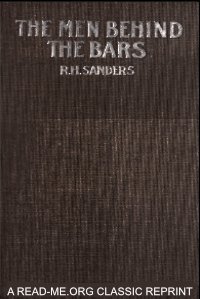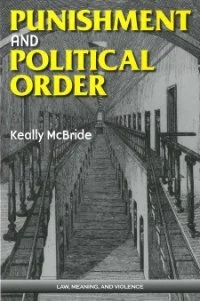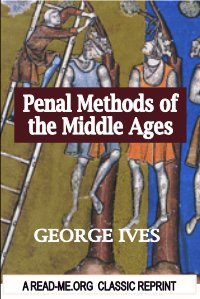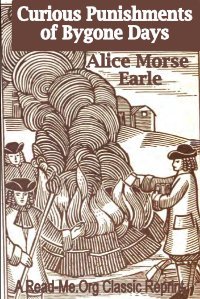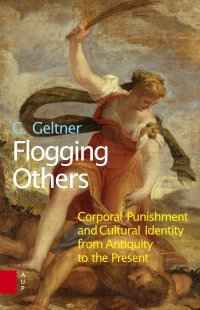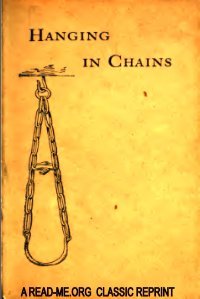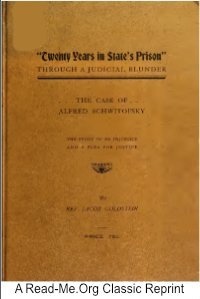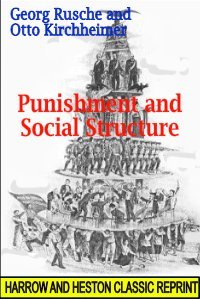By Really McBride.
“The primary purpose of this text is to look at punishment as a central problem of political order. Sociologists, legal scholars, and criminologists study penal regimes: the discipline of political science, with notable exceptions, has ceded this ground. 1 This is a terrible mistake: as I will demonstrate, punishment is both a uniquely revealing lens into how political regimes work as well as a central problem for political administration that requires careful negotiation of the stated ideals of a polity in the exercise of power.”
University of Michigan Press (2007) 205p.
Edited by Elisabeth Fransson, Francesca Giofrè and Berit Johnsen.
“My cell is as large as a student’s small room: I would say that roughly it measures three by four and a half meters and three and a half meters in height. The window looks out on the courtyard where we exercise: of course it is not a regular window; it is a so-called wolf’s maw with bars on the inside; only a slice of sky is visible and it is impossible to look into the courtyard or to the side.”
Creative Commons (2018) 349p.
By George Ives.
Criminals, Witches, Lunatics Prisons as places of detention are very ancient institutions. As soon as men had learned the way to build, i. n stone, as in Egypt, or with bricks, as in Mesopotamia, when kings had many- towered fortresses, and the great barons castles on the crags, there would be cells and dungeons in the citadels. But prisons as places for the reception of ‘‘ordinary (as distinct from state or political) criminals for definite terms only evolved in England many centuries afterwards…
Read-Me.Org Classic Reprint. Private circulation (1910) 188p.
By A. Merchant.
Edited by Frank Henderson. “To a kind and devoted brother, who cheered me with words of Christian sympathy and brotherly love during the darkest and most desolate hours of my past unhappy career, the following pages are affectionately inscribed by the author.”
Richard Bentley et al. publishers to her Majesty (1869) 259 pages.
By A .Prison Matron.
”I wish it to be clearly understood that these are the honest reminiscences of one retired from Government many years of prison service experience —that enable me to offer my readers a fair statement of life and adventure at Brixton and Millbank prisons, and afford me the opportunity of attempting to convey some faint impression of the strange hearts that beat perhaps break, a few of them…”
London. Hurst and Blackett (1862) 320p.
By G. Geltner.
Corporal Punishment and Cultural Identity from Antiquity to the Present.“Corporal punishment is an evocative, almost self-explanatory term. But like other concepts with powerful and immediate connotations, it is poorly understood and rarely interrogated. Outside academia, and often within it, corporal punishment is the subject of simplistic analyses and misinformed expositions. The concept itself is ill-defined, its comparative history (as traced by historians of punishment) neglected, and there is little insight into its functions and meaning in a given cultural context,”
Amsterdam University Press (2014) 113p.
By Anita Mackay.
In December 2017, Australia ratified the Optional Protocol to the United Nations Convention against Torture and Other Cruel, Inhuman or Degrading Treatment or Punishment, and in doing so committed itself to opening up places in which persons are deprived of their liberty to enhanced levels of external independent scrutiny. This very timely book offers a compelling analysis of current issues concerning prison detention in Australia and explores the prerequisites for addressing the problems it identifies.
ANU Press (2020) 368p.
By Albert Hartshorne.
‘And humanity would recoil to-day with abhorrence from the actual gibbet, sensation itself would be stunned at the punishment for High Treason, the drawing and quartering of patriots, whose names may shine in history " through their tears like wrinkled pebbles in a glassy stream." It will be borne in mind that the gallows and the gibbet are the most ancient instruments of capital punishment in the world.’ NY. Cassell Publishing (1893) 160p.
By Rev. Jacob Goldstein,
Through a Judicial Blunder. The case of Alfred Schwitofsky. The story of an injustice and a plea for justice. By Rev. Jacob Goldstein. “He who hath the Truth on his side is the Majority — even though he stand alone.”
Read-Me.Org Classic Reprint (1913) 181p.
By Owen Davies and Francesca Matteoni.
Criminal Bodies and the Gallows in Popular Medicine. This book explores the magical and medical history of executions from the eighteenth to the early twentieth century by looking at the afterlife potency of criminal corpses, the healing activities of the executioner, and the magic of the gallows site. The use of corpses in medicine and magic has been recorded back into antiquity. The lacerated bodies of Roman gladiators were used as a source of curative blood, for instance. In early modern Europe, a great trade opened up in ancient Egyptian mummies and the fat of executed criminals, plundered as medicinal cure-alls. However, this is the first book to consider the demand for the blood of the executed, the desire for human fat, the resort to the hanged man’s hand, and the trade in hanging rope in the modern era. It ends by look at the spiritual afterlife of dead criminals.
Palgrave Historical Studies in the Criminal Corpse and its Afterlife. (2017) 122 pages.
By Pëtr Kropotkin.
“My first acquaintance with prisons and exile was made in Siberia, in connection with a com- mittee for the reform of the Russian penal system. There I had the opportunity of learning the state of things with regard both to exile in Siberia and to prisons in Russia, and then my attention was attracted first to the great question of crime and punishment. Later on, in 1874 to 1876, 1 was kept, awaiting trial, nearly two years in the fortress of Peter and Paul at St. Petersburg, and could appreciate the terrible effects of protracted cellular confinement upon my fellow-prisoners.”
Harrow and Heston Classic Reprint. (1887) 123 pages.
By Ida B. Wells-Barnett.
Lynch Law in All Its Phases. “The Afro-American is not a bestial race. If this work can contribute in any way toward proving this, and at the same time arouse the conscience of the American people to a demand for justice to every citizen, and punishment by law for the lawless, I shall feel I have done my race a service. Other considerations are of minor importance.”
Harrow and Heston Classic Reprint. (1892, 1893, 1894) 33 pages.
By Ida B. Wells-Barnett.
A Six-Weeks’ Record in the Center of Southern Civilization, As Faithfully Chronicled by the “Atlanta Journal” and the “Atlanta Constitution.” Also the full report ofLouis P. Levin. The Chicago Detective Sent to Investigate the Burning of Samuel Hose, the Torture and Hanging of Elijah Strickland, the Colored Preacher, and the Lynching of Nine Men for Alleged Arson. This Pamphlet is Circulated by Chicago Colored Citizens. 2939 Princeton Avenue, Chicago.
Harrow and Heston Classic Reprint. (1899) 20 pages.
By Ida B. Wells-Barnett.
Tabulated Statistics and Alleged Causes of Lynching in the United States. “ From 1865 to 1872, hundreds of colored men and women were mercilessly murdered and the almost invariable reason assigned was that they met their death by being alleged participants in an insurrection or riot. But this story at last wore itself out. No insurrection ever materialized; no Negro rioter was ever apprehended and proven guilty, and no dynamite ever recorded the black man's protest against oppression and wrong.
Harrow and Heston Classic Reprint. (1895) 112 pages.


